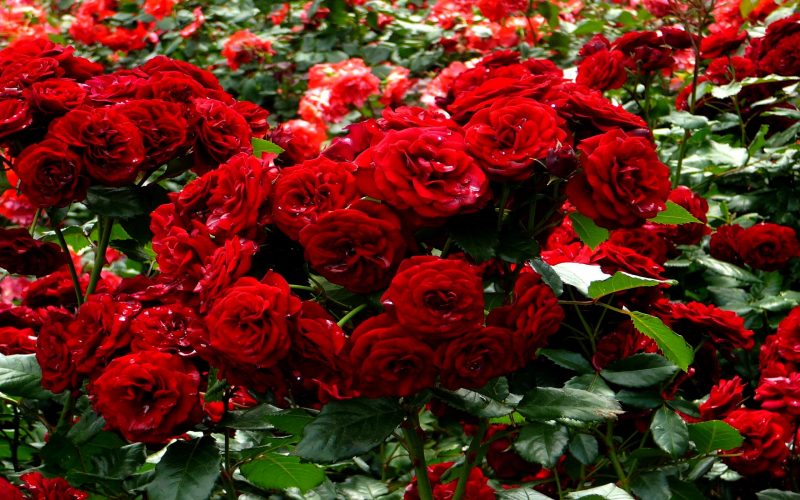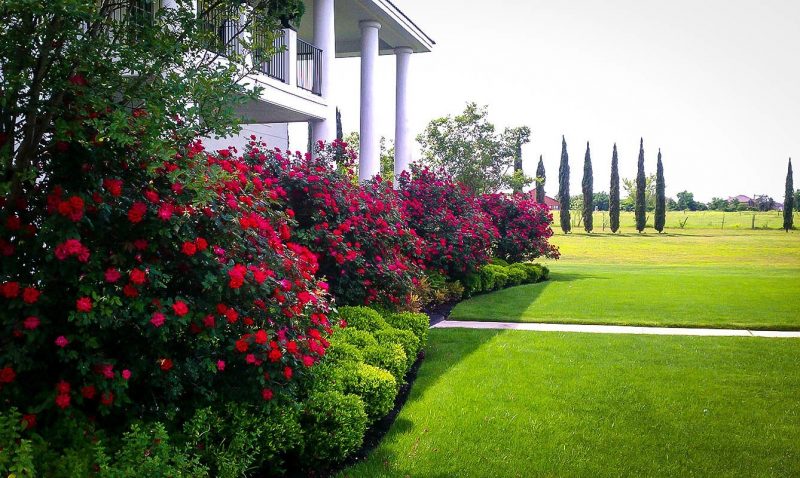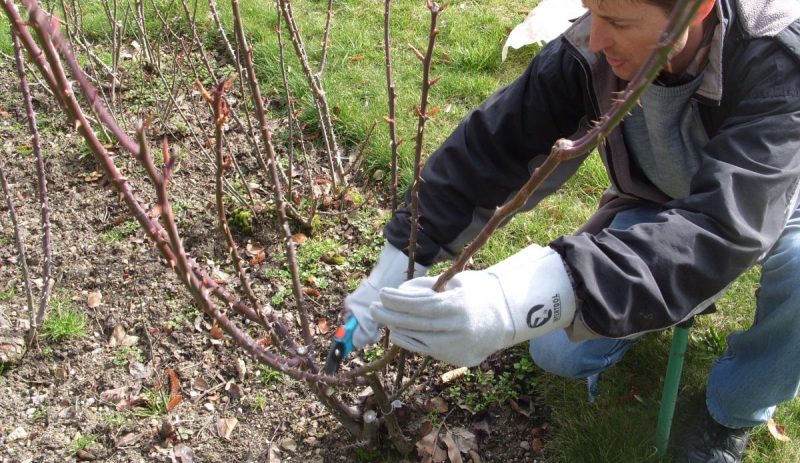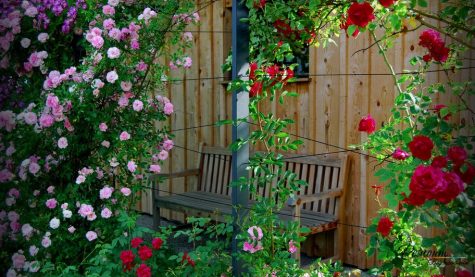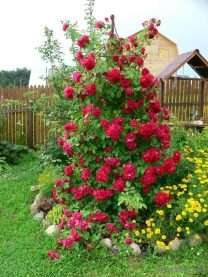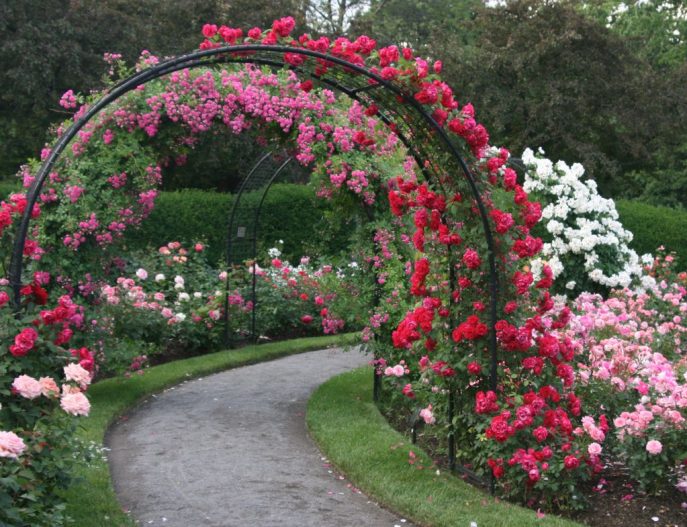Rose is the queen of flowers. And the wicker shape, similar to liana, is the real empress. Just such a title deserves the rose "Santana", capable of decorating any garden with its splendor and masking any imperfections in the landscape, structure, fence.
Material Content:
History of selection of roses "Santana"
If it weren’t for the German adorer of roses Matthias Tantau, the beautiful “Santana”, which can be compared to the “million scarlet roses” from the once famous song, could not have settled in numerous gardens in almost all parts of Europe and beyond. She was born many years after the death of Tantau, but appeared thanks to the efforts of breeders of the company, which he founded at the beginning of the last century.
Matthias was the son of a farmer from the town of Utersen. In his youth, he learned the basics of gardening, after a whole year he worked in the famous rose nursery Peter Lambert. Returning home, I decided to open my own nursery for growing wonderful flowers. Which he did in January 1906. And after ten years and a little engaged in the cultivation of new varieties. And already in 1919 he represented his exquisite “pets” at international exhibitions.
Today, a small nursery is the famous company Rosen Tantau. And the new variations of the Queen of the Gardens, as well as more than a hundred years ago, are still "dispersing" all over the world.
The climbing rose "Santana" is a hybrid from the class "Hybrids of the rose" Cordesia "(Kordesii). Among her "ancestors" - rose Max Graf, wrinkled and rose Visurana. This delightful work of the hands of Rosen Tantau breeder Hanson Jürgen Evenson was recorded in 1985. And for more than three decades, gardeners have considered it a great success to have it at home.
Description and features of the variety
"Santana" is rightly recognized as one of the most beautiful varieties of climbing roses. Among its main features, to which it owes universal love, are flowering from spring almost to the first frosts and velvety large (8 to 12 cm in circumference) cup flowers of a rich red-scarlet hue, not fading for a long time.
The variety description includes the following characteristics:
- resistance to ailments and plant pests;
- immunity to rainy and cold weather;
- ability to withstand quite a low winter temperature, although they feel better in mild climates;
- leaves are thick, shiny, juicy green;
- very branched shoots even on the ground, thanks to which the "Santana" always looks aesthetically pleasing;
- flowers with "velor" bright petals;
- the smell is light and sweet;
- flowering lasts a long time, the plant is completely dotted with large flowers;
- the buds are not opened separately, but are collected in groups of three to seven pieces, and very evenly over the entire area of the bush;
- grows up to 2.5 - 3 m in height and up to 1.5 - 2 m in width;
- the branches are quite elastic and can do without backups.
This rose will be the way everywhere. But especially against a light background, you should not take your eyes off her.
Outdoor landing
If such a beauty fell into your hands, you will have to provide her with comfortable conditions so that the rose bush will live up to expectations. In what environment does a curly guest feel at home?
- One of the basic requirements is the selection of a strong “right” seedling. It should have two or three lignified shoots, a healthy rhizome and bark without damage.
- The day before planting, the young plant must be held in a bucket of water. In addition, disinfect the roots with a 3% solution of copper sulfate and remove all leaves.
- Planting should be in a certain period. If in the fall - then from mid-September to mid-October. In spring, it’s good to do this from mid-April to the tenth of May.
- The best place for Santana roses is a generously lit area with good air movement, but without a draft. If it is the south side of the site - great.
- An area of 50X50 cm is sufficient for the seedling. The main thing is not to forget ahead of time to pour a bucket of humus into the pit and moisten it well.
It is not necessary to bury the root deeper than 30 cm. Although gardeners advise adding 2 or 3 cm more during autumn planting and warm them 20 cm high to the ground. This will prevent the roots from freezing in the winter. - The top is immediately trimmed, leaving the trunk about 20 cm tall. This will ensure active development and growth.
The bush will require the most careful control in the first year of life. After so much attention he would not need.
Agrotechnics of cultivation and care
In the second year, caring for “Santana” will begin to take much less time. If during planting all the nuances were taken into account, and you looked after the plant in accordance with all the rules, by this time the flowers will already please with beauty and aroma.
Regular pruning, watering once a week or ten days and top dressing will be enough for the rose bush. What the humus, laid in the landing hole, supplied the rose, has already been used up in two years.
Therefore, she will be glad to "treat":
- nitrogen fertilizers (urea, ammonium nitrate) immediately after April pruning;
- a bucket of compost under the root a week after that;
- a solution of chicken droppings or mullein (4-5 liters) during the formation of buds;
- phosphorus-potassium fertilizers in July;
- liquid organics and Kalimagnesia in early September.
Despite the rather high immunity to diseases, it does not hurt to know what ailments can still be noted and how to resist them.
- Cones on the roots are a sign of bacterial cancer. Affected areas are cut off, and healthy ones are disinfected with copper sulfate.
- If white bloom is visible on the leaves and stems, then your pet suffers from powdery mildew. Bottom line - it develops poorly and sparsely blooms. There is only one way out - to uproot the bush and burn it.Spraying the branches with copper sulphate during the period when the buds have not yet swelled will help to prevent misfortune in others.
- Black "blots" on the shoots and leaves - the so-called black spotting. All diseased leaves need to be quickly cut off and burned. You can prevent this phenomenon with the help of phosphorus and potassium fertilizers.
Pruning roses, preparing for winter
The planting and flower care conditions described above are indispensable factors for the well-being of the plant. There is another point that is important for any representative of the Rosaceae family, and for “Santana” in particular, it is pruning.
Without it, a blooming beauty:
- will develop worse;
- will not be able to resist disease;
- will give much less flowers.
As a result, the once aesthetic bush will turn into shapeless thickets. True, even without his red cup flowers, he is also not bad because of the thick shiny leaves. However, such beauty will be incomplete. But subject to all conditions, young shoots are stretched to 3.5 m per year, and the flowers amuse the eyes with an even distribution throughout the bush.
Since Santana blooms continuously until late autumn, by the third or fourth year of life, it begins to weaken and needs to be pruned in a special way. The trick is to remove not only ugly twigs and shoots, but also cut off young shoots, which with their density prevent the rose from forming correctly. In addition, after three years, the main shoots are eliminated, with the exception of a couple of three-year-olds and seven to eight flowering ones.
There is a need for annual pruning ahead of winter. During this procedure, get rid of the longest branches.
In addition, before winter holidays, roses need:
- from the end of August, stop fluffing up the earth under the bush;
- change nitrogen fertilizing to potash;
- closer to the end of autumn and the first frost, remove from the props, remove damaged shoots and leaves;
- tie the branches with lashes and lay them on dry leaves or branches of conifers, pressing them to the ground with hooks made of wood or metal;
- to build a coating, but not before resistant frosts are set to -50 ° C to harden the plant.
You can also make a “fur coat” from dry fallen leaves or pine-spruce “paws”. The main thing is to arrange so that under them there remains a layer of air. Then the "Santana" will not freeze and will not rot.
Another important condition is that all the described procedures are carried out only in dry weather.
The use of varieties in landscape design
Curly “Santana” gives room for design fantasies. A popular version is the contrast of its shining red flowers and dense foliage with bright buildings. Through the climbing branches create pyramids and garlands, rich arches that welcome guests at the entrance to the garden. Pergolas turn into fabulous mini-castles with fragrant flower columns. "Santana" allows you to revive the walls of a residential building and make an unrecognizable fence, obscure not too attractive view of anything. They came up with another interesting way to decorate the garden: sometimes it is planted in the vicinity of some adult strong tree. Soon the rose begins to trail along it, transforming its support and creating a truly magical sight.


